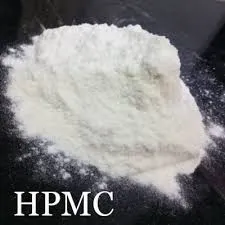
Dec . 14, 2024 21:25 Back to list
hec hydroxyethyl cellulose
Hydroxyethyl Cellulose An In-Depth Exploration
Hydroxyethyl cellulose (HEC) is a cellulose derivative that has gained significant attention in various industries due to its unique properties. As a non-ionic polymer, HEC is widely utilized in formulations requiring viscosity modifiers, thickeners, stabilizers, and film-forming agents. This article delves into the characteristics, applications, and benefits of HEC, shedding light on why it has become a crucial component in numerous products.
Chemical Structure and Properties
HEC is synthesized by the ethylene oxide reaction with cellulose, leading to a structure that introduces hydroxyethyl groups. This modification enhances its solubility in water and contributes to its thickening capability. With varying degrees of substitution (DS) and molecular weights, HEC can be customized for specific applications. Its high water retention capacity combined with an ability to form gels upon drying makes it particularly valuable in both cosmetic and industrial settings.
One of the standout properties of HEC is its pseudoplastic behavior, meaning that its viscosity decreases under shear stress. This behavior is especially beneficial in formulations where consistent application without excessive effort is desired, such as in paints, adhesives, and personal care products.
Applications in Various Industries
1. Cosmetics and Personal Care HEC is a popular ingredient in products like shampoos, conditioners, lotions, and creams. Its thickening ability enhances the texture and application of these formulations, providing a luxurious feel. Furthermore, HEC acts as a stabilizer for emulsions, ensuring that oil and water phases of creams remain mixed, enhancing the product's shelf-life and efficacy.
2. Pharmaceuticals In the pharmaceutical industry, HEC is utilized in controlled drug delivery systems. It can form gels that enable the sustained release of medications. Additionally, its biocompatibility is a significant factor that allows it to be used in various formulations, including topical gels and oral solutions, providing a suitable medium for drug solubilization.
hec hydroxyethyl cellulose

3. Food Industry HEC has found its application in food products as a thickening agent, stabilizer, and emulsifier. Its ability to retain moisture makes it useful in bakery products, dairy items, and sauces, contributing to improved texture and increased shelf life while maintaining product consistency.
4. Construction In the construction industry, HEC serves as an additive in cementitious formulations. It improves the workability of mortars, plasters, and tile adhesives, allowing for enhanced adhesion and retarding water evaporation rates, which is critical during the application process.
5. Paints and Coatings HEC is widely employed in the formulation of water-based paints and coatings. Its thickening properties allow for smoother application and improved brushability, while also providing stability to the paint formulation. Moreover, it enhances the overall performance of the coating, including its resistance to sagging and running.
Environmental Considerations
One of the advantages of using HEC is its biodegradability. As it is derived from natural cellulose, it poses minimal environmental risks compared to synthetic polymers. This eco-friendliness is a significant driving factor behind the increasing interest in HEC as industries shift towards sustainable practices. Furthermore, its non-toxic nature makes it safe for use in consumer products and applications that come into contact with skin or food.
Conclusion
Hydroxyethyl cellulose is a versatile and multifunctional polymer that plays a crucial role in numerous industries, from personal care to pharmaceuticals and construction. Its unique properties, such as water solubility, thickening ability, and environmental sustainability, make it an ideal choice for various applications. As industries continue to innovate and adapt to changing consumer demands, the importance of HEC is likely to grow even further. With ongoing research and development, the potential uses for this remarkable compound are bound to expand, reinforcing its status as a valuable ingredient in modern formulations.
-
Versatile Hpmc Uses in Different Industries
NewsJun.19,2025
-
Redispersible Powder's Role in Enhancing Durability of Construction Products
NewsJun.19,2025
-
Hydroxyethyl Cellulose Applications Driving Green Industrial Processes
NewsJun.19,2025
-
Exploring Different Redispersible Polymer Powder
NewsJun.19,2025
-
Choosing the Right Mortar Bonding Agent
NewsJun.19,2025
-
Applications and Significance of China Hpmc in Modern Industries
NewsJun.19,2025







